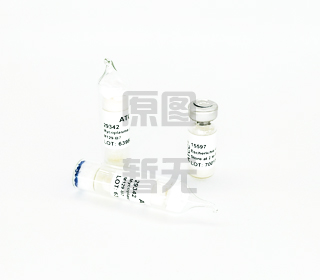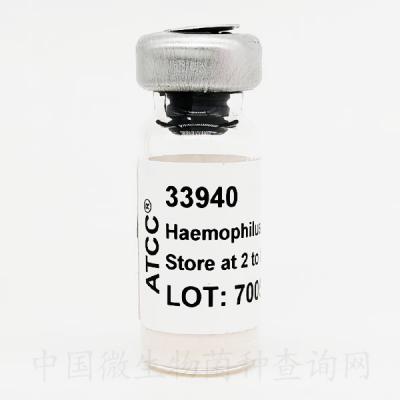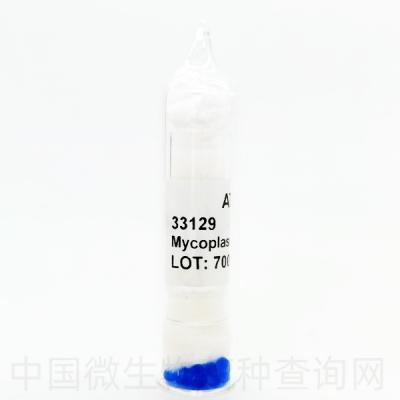
Candida intermedia (Ciferri et Ashford) Langeron et Guerra 拉丁名
(ATCC? 14439?) 統(tǒng)一編號(hào)
Strain Designations 別名 CBS 572 [493, ATCC 9442, CCRC 21250, DBVPG 6218, IFO 0761, JCM 1607, NCTC 3147, NRRL Y-1512]
Application 用途 Produces citric acid, citrate
Bioethanol production
Biosafety Level 生物安全等級(jí) 1
Biosafety classification is based on U.S. Public Health Service Guidelines, it is the responsibility of the customer to ensure that their facilities comply with biosafety regulations for their own country.
Product Format 提供形式 freeze-dried
Storage Conditions 保藏條件
Frozen: -80°C or colder
Freeze-Dried: 2°C to 8°C
Live Culture: See Propagation Section
Type Strain 模式菌種 yes
Preceptrol? no
Genome Sequenced Strain Yes
Comments 注釋 RAPD profiles
Genome sequencing strain (RIKEN Center for Life Science Technologies, Japan)
Medium ATCC? Medium 28: Emmons' modification of Sabouraud's agar
ATCC? Medium 200: YM agar or YM broth
ATCC? Medium 324: Malt extract agar
Growth Conditions 生長(zhǎng)條件
Temperature 培養(yǎng)溫度: 24°C to 26°C
Atmosphere 需氧情況: Typical aerobic
Name of Depositor 寄存者 CBS
Chain of Custody 來源國家 ATCC <-- CBS <-- M. Langeron 493
Isolation 分離基物 Human feces, Puerto Rico
Cross References Nucleotide (GenBank) : AF218968 Candida intermedia strain ATCC 14439T 5.8S ribosomal RNA gene,
Nucleotide (GenBank) : BCGD00000000 Candida intermedia strain JCM 1607, whole genome shotgun sequencing project
References 參考文獻(xiàn) Suzuki T, et al. Method of producing citric acid. US Patent 3,733,253 dated May 15 1973
Langeron M, Guerra P. Etudes monographiques sur les Mycotoruloidees. Ann. Parasitol. Hum. Comp. 16: 429-476, 1938.
Ciferri R, Ashford BK. A new species of Blastodendrion. P.R. J. Public Health Trop. Med. 5: 91-105, 1929.
Zeng S, et al. Random amplified polymorphic DNA analysis of culture collection strains of Candida species. J Med Vet Mycol 34: 293-297, 1996. PubMed: 8873891
Guzman B, Lachance MA, Herrera CM. Phylogenetic analysis of the angiosperm-floricolous insect-yeast association: Have yeast and angiosperm lineages co-diversified? Mol Phylogenet Evol 68: 161-175, 2013. PubMed: 23583418
Tsui CK, et al. Re-examining the phylogeny of clinically relevant Candida species and allied genera based on multigene analyses. FEMS Yeast Res. 8: 651-659, 2008. PubMed: 18248416
Diezmann S, et al. Phylogeny and evolution of medical species of Candida and related taxa: a multigenic analysis. J Clin Microbiol 42: 5624-5635, 2004. PubMed: 15583292
Pryce TM, et al. Rapid identification of fungi by sequencing the ITS1 and ITS2 regions using an automated capillary electrophoresis system. Med. Mycol. 41: 369-381, 2003. PubMed: 14653513
Daniel HM, Meyer W. Evaluation of ribosomal RNA and actin gene sequences for the identification of ascomycetous yeasts. Int. J. Food Microbiol. 86: 61-78, 2003. PubMed: 12892922
Chen YC, et al. Identification of medically important yeasts using PCR-based detection of DNA sequence polymorphisms in the internal transcribed spacer 2 region of the rRNA genes. J. Clin. Microbiol. 38: 2302-2310, 2000. PubMed: 10834993
Sugita T, Nakase T. Non-universal usage of the leucine CUG codon and the molecular phylogeny of the genus Candida. Syst Appl Microbiol 22: 79-86, 1999. PubMed: 10188281
Kurtzman CP, Robnett CJ. Identification and phylogeny of ascomycetous yeasts from analysis of nuclear large subunit (26S) ribosomal DNA partial sequences. Antonie van Leeuwenhoek 73(4): 331-371, 1998. PubMed: 9850420
Kurtzman CP, Robnett CJ. Identification of clinically important ascomycetous yeasts based on nucleotide divergence in the 5' end of the large-subunit (26S) ribosomal DNA gene. J Clin Microbiol 35: 1216-1223, 1997. PubMed: 9114410





